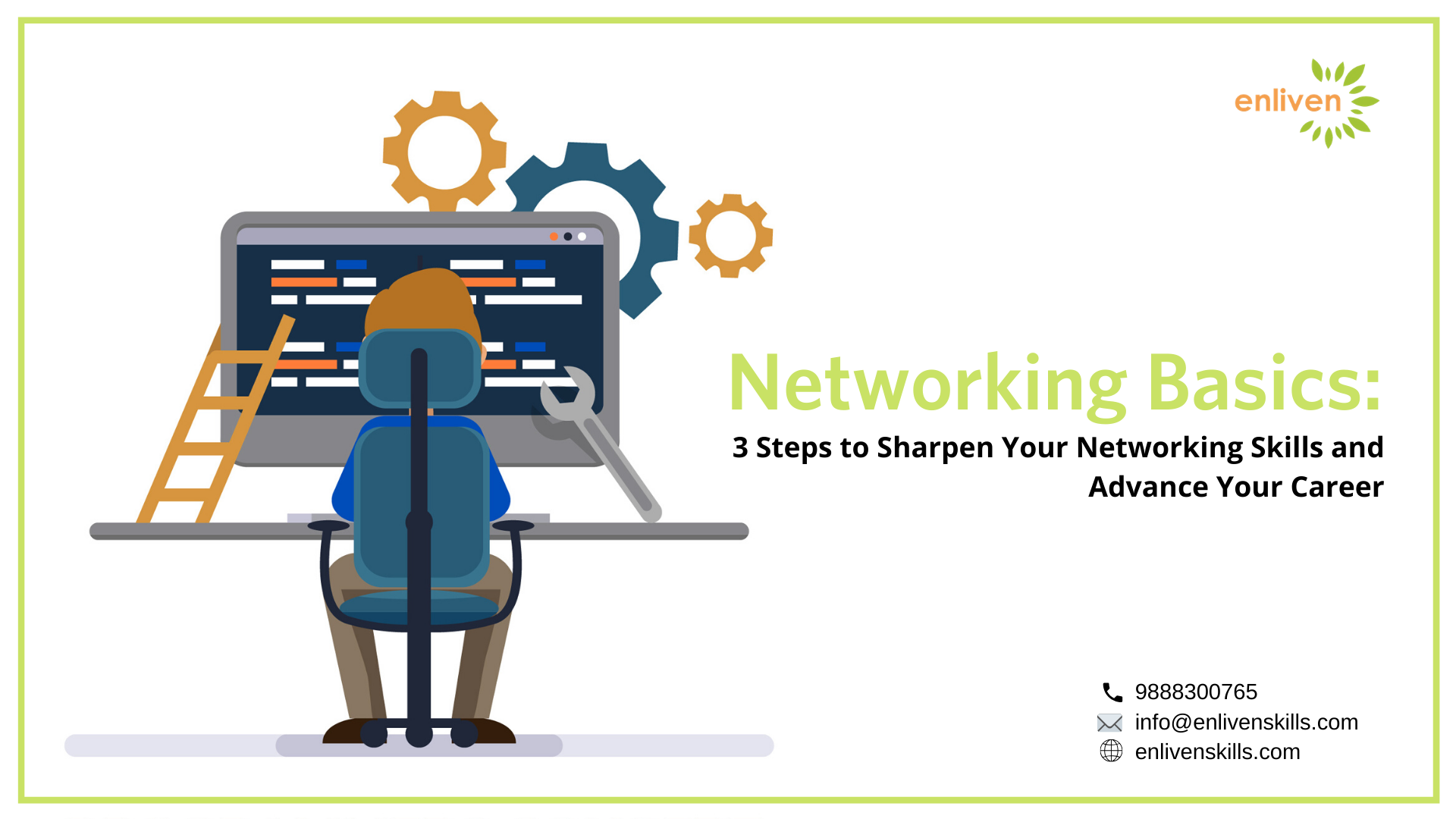Be the part of a networking training in Chandigarh to understand the basics and sharpen your networking skills to advance your career.
The process of linking two or more computers in a way to create contacts and exchange information among individuals, groups, and institutions is known as networking. Concerning hardware, protocols, and software, by using wired or wireless technology, networking involves the utilization of various theories in different fields like IT, computer science and electrical engineering.
Either it is internet accessing or document printing or downloading an attachment from an email, networks are playing a key role in the success of every business today. Networking may refer to the arrangement of devices within a single room to millions of devices all over the entire globe and can be defined based on its purpose and size.
Types of Network used Today
11 types of networking are used in today’s business environments namely Personal Area Network (PAN), Local Area Network (LAN), Wireless Local Area Network (WLAN), Campus Area Network (CAN), Metropolitan Area Network (MAN), Wide Area Network (WAN), Storage Area Network (SAN), System Area Network, Passive Optical Local Area Network (POLAN), Enterprise Private Network (EPN), and Virtual Private Network (VPN). Enroll with one of the best Technician Training in Chandigarh that helps you in selecting the right networking system for your business to improve uptime, maintain security, and help improve user access.
3 Steps to Improve Your Networking Skills
As the foundation of every business, computer networking helps them to build their pipeline and improve the reach of their potential customers. As per the current digital disruption, IT professionals should keep pace with the dynamic nature of business networking technology to advance their careers. Therefore to thrive in technically changing business tides, learn each essential aspect of networking to sharpen your technical skills.
1. Acquire Fundamental Knowledge of Networking
To kick start your career in networking, start with learning its fundamentals. Learn the detailing of the components collectively forming the network structure of your business and understand their functioning with each other. Some of the most essential components of a network are switches, access points, servers, clients, IP addresses, Routers and, Firewalls. Clients are the computer or any other hardware device or a software application that requests to the server for accessing the data.
To create an interface for data exchange between multiple clients or devices in a network, switches and access points are used. Both of these components connect the devices through wired or wireless technology. Each client has its unique identification number ie. IP Address that is used by the server or host device to identify the location of the client device and its belonging to the network.
Based on the direction provided by the IP Address, the server sends the requested information in the form of web content or applications or file to the appropriate clients. Routers are used to control the information flow between clients and servers all over the network and to secure the network from unwanted user access.
2. Specialize in Education and Gain Experience
Continuing your education is the most important aspect to augment your networking career path. Complete your bachelor’s degree first. Then prepare yourself by enrolling with beginner or intermediate networking certification courses. Every networking professional require step by step three certifications as follows:
Cisco Certified Entry Networking Technician (CCENT): During the initial stage of your networking career with CCENT preparation course, you will learn about networking interactions and functions, core routing and switching, firewall setting, wireless controllers and access points and basics of network security.
Cisco Certified Network Associate (CCNA) Routing and Switching: The CCNA offer opportunities for more specific credentials in areas such as security, data center, wireless, Network installation, configuration, operation and troubleshooting QoS elements and virtualized and cloud services.
CompTIA Network+: The certification demonstrates the mastery of the ability to identify network configuration efficiencies and deficiencies, network security standards, protocols and implementation, configuration, management, device maintenance, and network troubleshooting.
3. Catch Up on Upcoming Technical Advances
After getting certification in networking courses it’s time to gain some experience. To make a pace with the ever-changing networking strategies and trends, a networking professional needs to keep himself updated with new technological advances.
Launch your networking career by choosing one of the best job roles including, network specialist, network administrator, network engineer, network manager, network solution architect, network-manager, etc. Day by day growing networking industry is offering endless opportunities to enhance your skills set and uplift your career. Hence join one of the best networking training institutes and open the new doors to advance your career.

